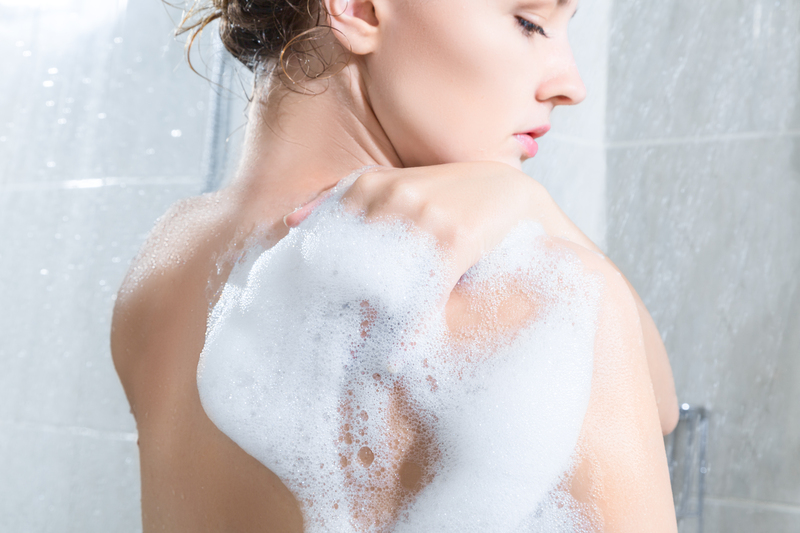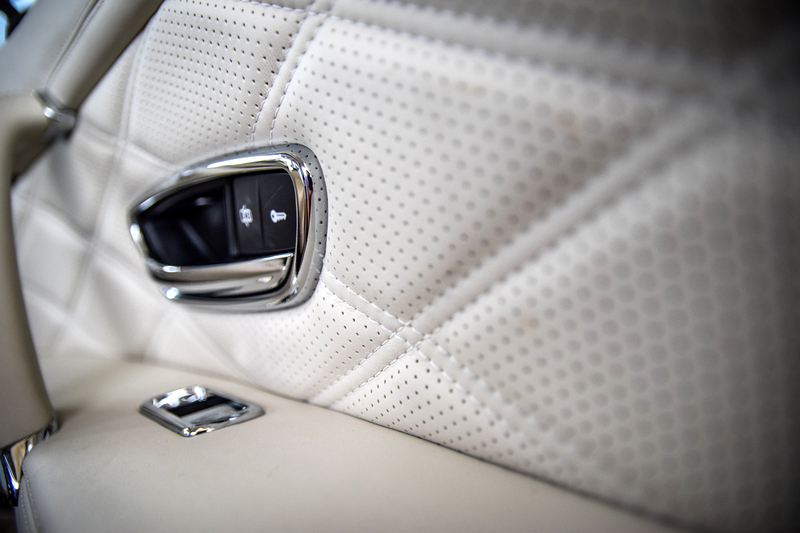Create a Completely Mold-Free Bathroom Sanctuary
Posted on 21/09/2025
Create a Completely Mold-Free Bathroom Sanctuary: Your Ultimate Guide
Do you dream of a refreshing bathroom sanctuary free from the worries of mold, mildew, and musty odors? If so, you're not alone. Mold not only tarnishes your bathroom's appearance but can negatively impact your health and well-being. That's why it's essential to create a mold-free bathroom and keep your personal oasis safe, serene, and sparkling clean. In this comprehensive guide, you'll learn practical strategies and proven tips for designing, cleaning, and maintaining a mold-resistant bathroom sanctuary. Read on to discover how to transform your space into a true haven of cleanliness and comfort, powered by smart habits and strategic upgrades.

Why Is Maintaining a Mold-Free Bathroom So Important?
Mold is much more than just an unsightly nuisance. Not only can it damage your bathroom's structure, grout, paint, and fixtures, but it can also trigger allergies, asthma, and other health concerns. Mold in bathrooms thrives in moist, poorly ventilated areas--making bathrooms an ideal breeding ground for spores. Creating a completely mold-free bathroom sanctuary ensures:
- Healthier indoor air quality
- Reduced risk of allergies and respiratory issues
- Longer-lasting bathroom fixtures and walls
- A more pleasant, fresh-smelling space
- Increased home value and appeal
Let's explore the key steps you can take to banish mold for good from your bathroom sanctuary.
Step 1: Focus on Bathroom Design for Mold Prevention
Choose Mold-Resistant Materials
The foundation of a mold-free bathroom environment begins during the design or renovation phase. Selecting the right materials is critical, as some products are naturally more resistant to mold and moisture.
- Tile: Porcelain and ceramic tiles are non-porous, making them excellent options for walls and floors.
- Grout: Use epoxy grout instead of cement-based grout, as it is less porous and more resistant to mold growth.
- Paint: Utilize semi-gloss or high-gloss paints that repel moisture and are easy to wipe clean. Look for products labeled as "mold and mildew resistant."
- Drywall: Install moisture-resistant (green board) or cement board behind tiles and in wet zones.
- Caulk: Use 100% silicone caulk in joints and corners; it withstands moisture better than acrylic or latex caulks.
- Fixtures: Opt for glass, stainless steel, and other non-porous materials for shelves, soap dishes, and cabinetry.
Investing in mold-resistant products during construction or remodeling delivers long-term benefits, making future cleaning and maintenance much simpler.
Smart Layout and Ventilation Design
The bathroom's layout plays a crucial role in its ability to remain a mold-free sanctuary. Good design prioritizes ample airflow and easy drying:
- Space out fixtures to allow air to circulate freely and prevent the build-up of moisture between surfaces.
- Install windows whenever possible to provide natural ventilation and sunlight, which helps inhibit mold growth.
- Plan for adequate drainage to ensure water flows away from all surfaces, especially in showers and around sinks.
A well-thought-out layout is the first step towards enjoying a mold-resistant bathroom sanctuary for years to come.
Step 2: Optimize Bath Ventilation -- The #1 Mold-Fighting Tool
The Importance of Proper Bathroom Ventilation
One of the most effective ways to keep your bathroom completely mold-free is to manage humidity actively. Mold can begin developing within 24-48 hours on damp surfaces, making ventilation the single most important feature in your anti-mold arsenal.
- Install a high-powered exhaust fan: Make sure it is vented outdoors, and not just recirculating air inside the house. Ideally, choose a fan with a humidity sensor that turns on automatically.
- Use the fan consistently: Turn the ventilation fan on every time you shower or bathe, and leave it running for 15-30 minutes afterward to clear out residual moisture.
- Open windows and doors: Whenever the weather allows, open windows to let humid air escape and fresh air in. Keep shower curtains or doors open after use to facilitate drying.
- Consider a dehumidifier: In bathrooms without windows, a small dehumidifier can be a lifesaver, drawing excess moisture out of the air and keeping relative humidity below 50%.
Proper ventilation alone can make an immense difference in maintaining a mold-free bathroom environment.
Simple Test for Humidity Control
Check your bathroom's humidity after a shower. If mirrors and windows remain fogged more than 10 minutes after the fan is on, you may need a more powerful or larger fan. Consider installing a hygrometer to monitor humidity and keep things under control.
Step 3: Keep Surfaces Sparkling & Dry
Routine Cleaning for a Mold-Free Bathroom Sanctuary
Regular cleaning is your frontline defense in the fight against mold. Mold and mildew spores can land anywhere--but they only thrive if given moisture and organic material to consume.
- Daily: Wipe down wet walls, glass, and floors with a squeegee or microfiber cloth after showers to speed up drying.
- Weekly: Clean surfaces with a mild, non-toxic cleaner such as a vinegar-water mix or a commercial mold inhibitor. Focus on tile grout, caulk, drains, and behind/underneath bottles and accessories.
- Shower Curtains & Mats: Wash shower curtains and bath mats regularly--don't let them stay damp or dirty.
- Bottles & Accessories: Frequently rinse and dry shampoo bottles, soap dishes, and toothbrush holders. Mold loves to grow beneath items left standing in water.
Tip: For persistent areas of mildew, mix equal parts of white vinegar and water, spray the affected zone, let it sit for 10 minutes, then scrub clean with a soft-bristle brush. Always dry thoroughly.
Keep Surfaces Dry and Clutter-Free
Moisture and clutter are a recipe for mold. After each use:
- Hang towels and robes to air dry
- Pull back the shower curtain to expose both sides
- Remove unnecessary items from ledges and around the tub or sink
The less "stuff" you have lingering in moist zones, the easier it is to maintain a truly mold-free bathroom space.
Step 4: Smart Storage & Organizational Strategies
Prevent Mold with Better Bathroom Storage
Cramped, cluttered bathrooms can encourage mold by trapping moisture around objects, towels, and baskets. Creating a functional and organized bathroom sanctuary helps eliminate hidden hotspots.
- Install shelves and caddies that allow water to drip off and air to circulate underneath toiletries.
- Opt for open storage instead of closed cabinets wherever feasible, ideally with slatted or wire designs.
- Use quick-drying baskets, bins, and organizers made of plastic or metal instead of cloth or wood.
- Hang towels on single hooks spaced far apart to maximize air drying.
Finally, regularly sort and declutter items you no longer use to reduce unnecessary sources of mold-loving moisture.
Step 5: Address Leaks, Drips, and Problem Areas Promptly
Fix Water Leaks Immediately
Even the best-cleaned bathroom can't stay mold-free if unnoticed leaks create hidden damp spots. Common sources include:
- Leaky faucets, showerheads, or toilets
- Cracked tiles or failing grout
- Deteriorating caulk around tubs and sinks
- Faulty plumbing beneath vanities
Check regularly for dampness around the base of toilets, inside cabinets, and beneath sinks. Address repairs immediately to prevent small drips from turning into moldy disasters.
Step 6: Mold-Resistant Upgrades
The Best Mold-Proofing Products for Your Bathroom Sanctuary
If you want long-lasting protection for your bathroom, consider these high-impact upgrades:
- Anti-microbial shower curtains and liners: These slow mold and mildew growth and are machine washable for easy care.
- Mold-resistant drywall ("greenboard"): Use in wall and ceiling construction for extra protection in high-moisture zones.
- High-quality exhaust fans: Choose models with built-in humidity sensors or timers for effortless air management.
- Waterproof LED lighting: Prevents moisture entry and discourages mold compared to traditional fixture designs.
- Sealed grout and caulk maintenance kits: DIY grout sealers and caulk refreshers protect joints and cracks from moisture entry.
Investing in durable, moisture-defensive upgrades helps you sustain a mold-resistant bathroom haven for years to come.
Step 7: Natural Ways to Prevent Mold Growth
Eco-Friendly, Chemical-Free Mold Prevention Methods
Many homeowners prefer natural, non-toxic alternatives for keeping their bathroom sanctuary mold-free. Some environmentally friendly ways include:
- Vinegar spray: Use as a daily rinse for tiles, walls, and glass. Vinegar is naturally fungicidal and leaves surfaces streak-free.
- Hydrogen peroxide: Lightly spray on stubborn mold patches, leave for 10 minutes, and wipe clean (avoid mixing with vinegar).
- Tea tree oil: Mix a teaspoon with a cup of water in a spray bottle; apply to mold-prone spots after showers.
- Baking soda: Brush onto grout for gentle, scratch-free cleaning and deodorizing.
- Charcoal bags: Place moisture-absorbing charcoal bags discreetly in cabinets to keep humidity down and absorb odors.
While natural remedies help as part of a maintenance routine, they should be used in conjunction with proper ventilation, cleaning, and repairs for truly mold-free results.

Step 8: Educate & Involve Your Household
Building Lasting Mold-Free Habits
The best mold prevention strategies only work if everyone in the household participates. Make these habits second nature:
- Wipe down wet surfaces after showers or baths.
- Hang towels and bath mats to dry after use--never leave in a heap.
- Leave the bathroom door open after bathing for maximum airflow.
- Report and fix leaks or water issues right away.
- Keep clutter to a minimum and frequently remove unused products.
Involve children by assigning age-appropriate cleaning and tidying tasks. Good habits will help you preserve your completely mold-free bathroom sanctuary for the long term.
Conclusion: Relax in Your Mold-Free Bathroom Sanctuary
Creating a mold-free bathroom sanctuary is a combination of smart design, proactive ventilation, diligent cleanliness, and prompt maintenance. By following these eight steps--from building with mold-resistant materials to nurturing family-wide bathroom habits--you'll enjoy a spotless, healthy, and serene space every day.
- Start with mold-resistant materials and a smart layout
- Ensure robust ventilation and humidity control
- Clean, declutter, and dry out surfaces regularly
- Stay vigilant for leaks and repair them quickly
- Embrace upgrades and natural prevention methods
- Foster mold-busting habits across your household
Ready to transform your space? With a little effort and the right strategies, you can banish mold for good and bask in the calm of your fully mold-resistant bathroom sanctuary. Enjoy your home's most refreshing retreat--spotless, breathable, and beautifully mold-free!




